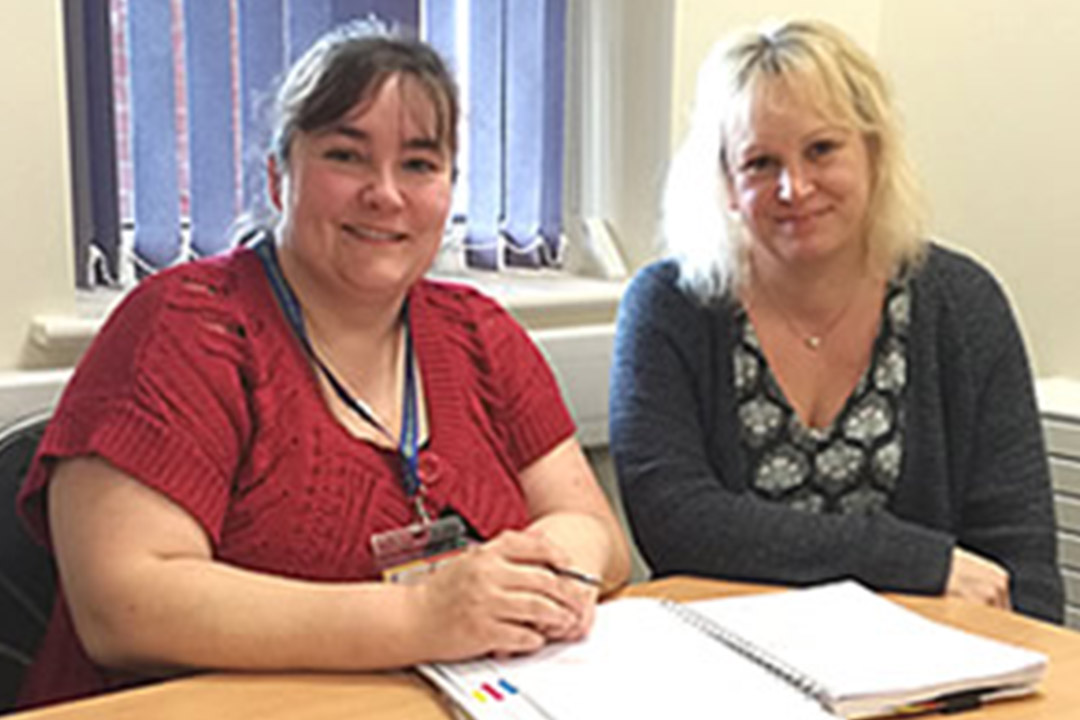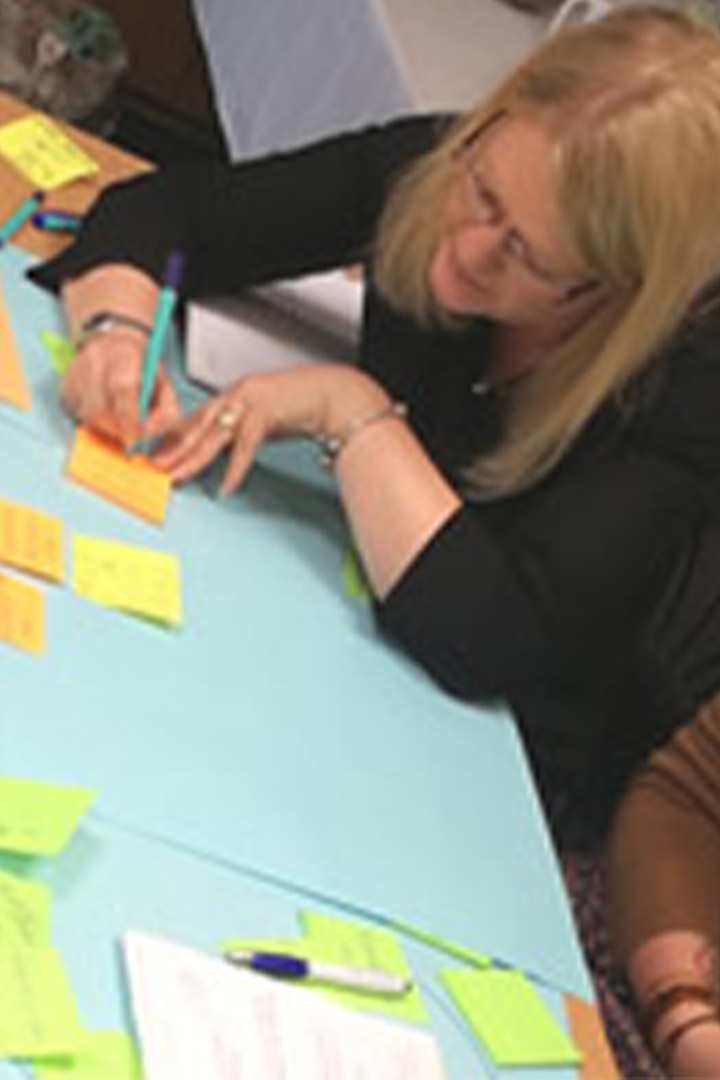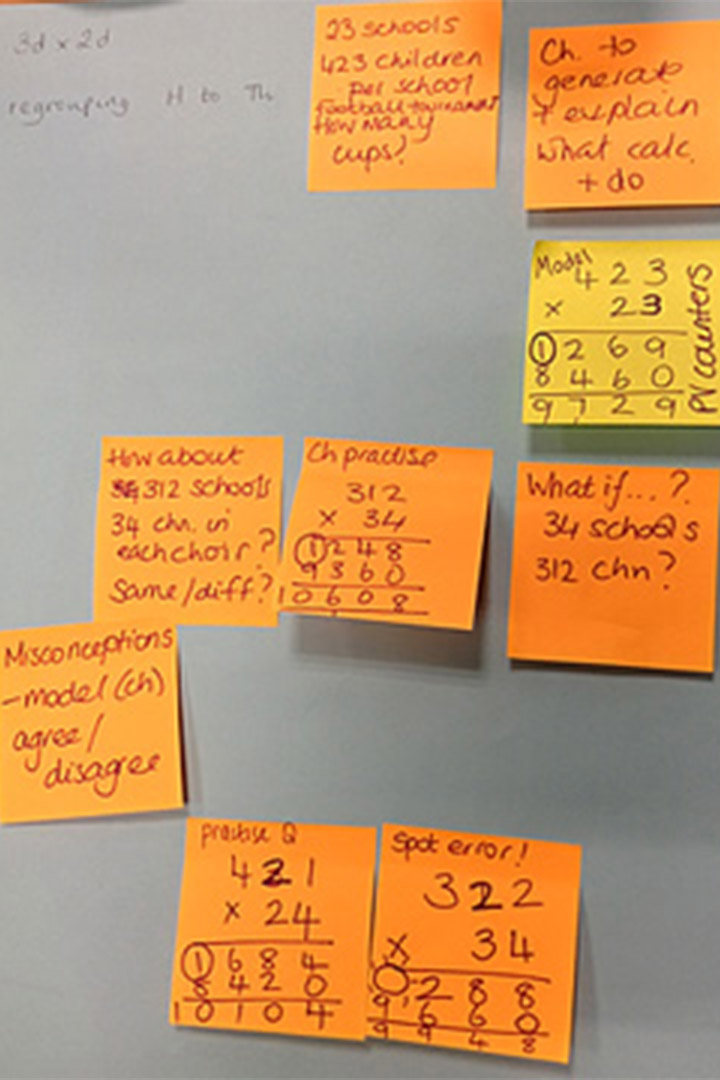Gap tasks: maximising the impact of Work Groups
We visit Gorse Hill Primary School Work Group in Swindon, and find out how gap tasks are driving powerful changes in pedagogy


Work Groups, run by Mastery Specialists, have enabled the principles and practices of mastery to spread through primary schools across the country.
With more than 250 Work Groups (also known as Teacher Research Groups or TRGs) already up and running by 2018, hundreds of teachers are now meeting regularly and working collaboratively to explore teaching for mastery approaches in their own classrooms and beyond, impacting on many thousands of pupils.
In between each Work Group meeting, participants engage in gap tasks. Gap tasks are classroom-based activities designed to be implemented and developed in the ‘gap’ between face-to-face Work Group meetings.
They mean that teachers can explore the principles of mastery through ‘hands on’ approaches with their own classes, then discuss outcomes, successes and ideas at the next Work Group meeting.
A recent Work Group meeting at Gorse Hill Primary School in Swindon, Wiltshire, brought together teachers from seven schools and, led by Mastery Specialist Suzanne Mathews (from Boolean Maths Hub), generated some lively discussion when feedback from the most recent gap tasks started the day…
Gap tasks – what, why, how?
The Work Group at Gorse Hill is holding its fourth meeting and the day begins with an excited buzz as the teachers involved start by sharing how the gap tasks they have been trialling have impacted on their own pupils. Everyone quickly acknowledges that, although their school settings differ, they have more in common than they may have first thought. Jacqui Hennessy, Maths Lead and Year 6 teacher at Swindon Academy (Primary Phase) in Wiltshire, says that:
Listening to different schools from different contexts at the Work Group actually makes you realise that we share many of the same issues. It is very encouraging to hear a range of different schools all experiencing the same things and collaborating on finding solutions.
So how do the gap tasks lead to these solutions? Jacqui explains:
Having the gap tasks means that I can do the things that my class needs.
Like Jacqui, all the teachers involved have spent the previous half term focusing on a particular aspect of teaching for mastery, and the first session of the Work Group is dedicated to a detailed evaluation of how these foci have impacted on teachers’ practice. Tasks are varied and innovative: using a puppet with whom to disagree or agree to foster an environment of useful mistakes; generalising from words into equations using stem sentences; focusing mathematical vocabulary through verbal rather than written generalisations. The sense of achieving something through a gap task – both in terms of professional development and as measured by pupils’ progress – is clear for all participants, but the discussion’s power to multiply this through sharing makes the session come alive. Calum Boothroyd, Year 5 teacher at Swindon Academy (Primary Phase) is inspired by the morning’s discussion:
As an NQT, it has been so useful for me to speak to other teachers at the Work Group about how they teach maths. In an hour and a half this morning, I’ve already got so many ideas to take back. I feel like it has been a springboard for me.
Gap tasks embody one of the principles of teaching for mastery itself – taking small steps to embed deeper understanding. They combine the chance to see real impact in a teacher’s own classroom, with the added bonus of this change in practice then being discussed and dissected with colleagues doing the same.
What are the classroom-based outcomes of the gap tasks for this Work Group?
Mathematical talk
Several of the gap tasks undertaken by teachers in the Swindon Work Group focus on developing mathematical talk in the classroom, and encouraging pupils to use mathematical vocabulary to express their ideas. During the feedback, the teachers all agree that one noticeable change as a result is a noisier classroom! Teachers comment that maths lessons now feature more talk, and therefore more explicit reasoning and understanding. Daniel Booth-Howe, Maths Lead and Year 6 teacher at Colebrook Junior School, notes that in his classroom:
You now hear maths in the room. We have spent time building mathematical language and you hear children verbalising this.
Teachers of KS1 classes take a similar approach through their gap tasks; Ann-Marie Arkle, Year 2 teacher at Burbage Primary School, can see the impact after just half a term:
I really get that mathematical talk starting from a younger age, and have seen the difference already in the children’s confidence in using the mathematical terms.
Full-sentence answers are crucial for many teachers as they encourage verbal expression of understanding; when asked to justify an answer, pupils aren’t allowed to simply affirm another pupil’s answer with the agreement “What s/he said”, but have to use full sentences to articulate their own comprehension. Julie Sinclair, Maths Lead and Year 6 teacher at Burbage Primary, sums it up:
The children have a deeper understanding as a result of the mathematical language used and the mathematical talk, which has really improved their fluency, reasoning and problem solving.
The learning environment and use of manipulatives
The Work Group’s discussion moves on to how, as well as making maths heard, the gap tasks undertaken mean that maths is seen. Teachers talk about how stem sentence wall displays making maths visual and giving pupils a reference tool, have meant that classrooms themselves have become a resource and enhanced learning. In some schools, this has gone beyond the classroom of the teacher from the Work Group, as Alana Mead, Year 6 teacher at St Francis C of E Primary School, explains:
We now have an area in our staff room where we have created a display on mastery and how it works at our school, including examples.
Greater engagement with manipulatives is identified by the group as another outcome of the gap tasks. Teachers who have chosen to focus on exploring depth in the times tables by looking at relationships find that children have become more confident in seeking manipulatives to prove and disprove their ideas. Concrete manipulatives no longer have the stigma attached of being for ‘those who can’t do it’, and even in Year 6 classes, manipulatives are now part and parcel of any maths lesson. Juliet Rean, Maths Lead and Year 2 teacher at Ramsbury Primary School, has also observed a new-found independence in her pupils when finding ways to support their reasoning and represent structures, and tells the group:
The children just do it. They don’t ask for resources, they just go and help themselves to resources that they know will help them.
Challenging previous conceptions about 'ability'

As the effects of the gap tasks are analysed, the conversation turns to the topic of 'ability grouping', and the teachers converge on a unanimous view: adopting a teaching for mastery approach means a teacher’s preconceptions about what children are able to attain are not only challenged, but often overturned. Previous ideas about ‘high ability’ or ‘low ability’ pupils have disappeared. Daniel Booth-Howe feels that a mastery approach has facilitated this change in his classroom: he aims to “remove the glass ceiling and give them the first two rungs on the ladder”. Adopting the principles of mastery that 'ability' is not fixed and attainment can improve because all pupils are capable of making progress, Daniel has embraced whole class teaching:
I want all the children to do well, and when I’ve got all of them doing really interesting things, it’s amazing. When those who are considered most able find themselves challenged, it’s going right. When those who previously felt uncomfortable doing maths feel comfortable, that is a great feeling for a teacher too. No child sees the end goal as something they can’t attain anymore.
Amy Benfield, Year 5 teacher at East Wichel Primary School, also believes mastery has exploded myths about 'ability grouping', and she has seen her pupils respond positively:
They are no longer ‘Circle group’ or ‘Square group’ and this has given them confidence, especially the lower-attaining pupils.
The feeling of the Work Group is undoubtedly that the mastery approach instils class-wide confidence, and the teachers can all give an example of what Juliet Rean describes as “a sea change in the hierarchy in the classroom”. The hands-on classroom practice of the gap tasks has meant that teachers have seen real and rapid improvements to pupils’ confidence and attainment.
Work in maths books
Caroline Voaden, Year 3 teacher at Colebrook Junior School, shares with the group how ‘The Real Story’ and ‘The Maths Story’ have transformed her pupils’ maths books, and the rest of the Work Group concur that pupils’ books now look very different. For Caroline, using pictorial representations (‘The Real Story’) alongside numerical calculations (‘The Maths Story’) has really helped her pupils to grasp new concepts. Deborah Lewis, Year 5 teacher at Ramsbury Primary, echoes this:
The children’s maths books look completely different. There is more drawing – bar models, area models. The books may appear messier, but they are full of workings and explanations.
Rather than being simply an account of what the children have done, the books are now a record of what they have thought. Mathematical talk is captured in books, enabling the teacher to see exactly how each pupil is processing and understanding the work. Julie Sinclair has witnessed a mastery approach in her classroom change how children view their books, and how they think about maths:
They see that maths isn’t sitting down, reading a maths book, and doing a page of sums. It is about talking, exploring and sharing ideas.
For Julie and the rest of the Work Group, the pupils’ books tell the story of how the gap tasks have effected a fundamental change in their pedagogy which is already having a profound impact on their pupils.
Minding the gap – where to go next?

The Gorse Hill Work Group spends the rest of the morning creating a detailed lesson plan for long multiplication which Amy will teach at a later meeting, observed by the rest of the group. Each teacher, with support from Mastery Specialist Suzanne, has also devised a new gap task to focus on over the coming half term. Calum is concentrating on his Year 5 class and has opted to look at mathematical talk, getting pupils to use stem sentences to develop reasoning. Daniel and Caroline are going to take their experiences school-wide, developing their own small steps S-plans then presenting them to a staff meeting to cascade knowledge to colleagues. The feedback from these tasks at the next meeting will no doubt spark another lively discussion, and enable everyone involved in the Work Group to take back strategies to use in their own classroom.
Alana sums up the way in which gap tasks, and the discussions which follow, have benefits which ripple far wider than in an individual teacher’s classroom:
Schools working together is so powerful. We hear what another school has done successfully and think ‘Right, we will give that a try.’
Amy agrees, and has embraced the experience of being part of the Work Group. For her, the gap tasks are an integral part of the programme:
You talk about something, go away and apply it in your classroom, and really see the impact yourself.
If you are interested in being part of a Teaching for Mastery Work Group, there are opportunities available to join a local Work Group. Visit our Teaching for Mastery Opportunities page, or contact your local Maths Hub to find out more and get involved.
This case study was first published in 2018.